Jaguar XF R-S (2013-2015) engines, drive and performance
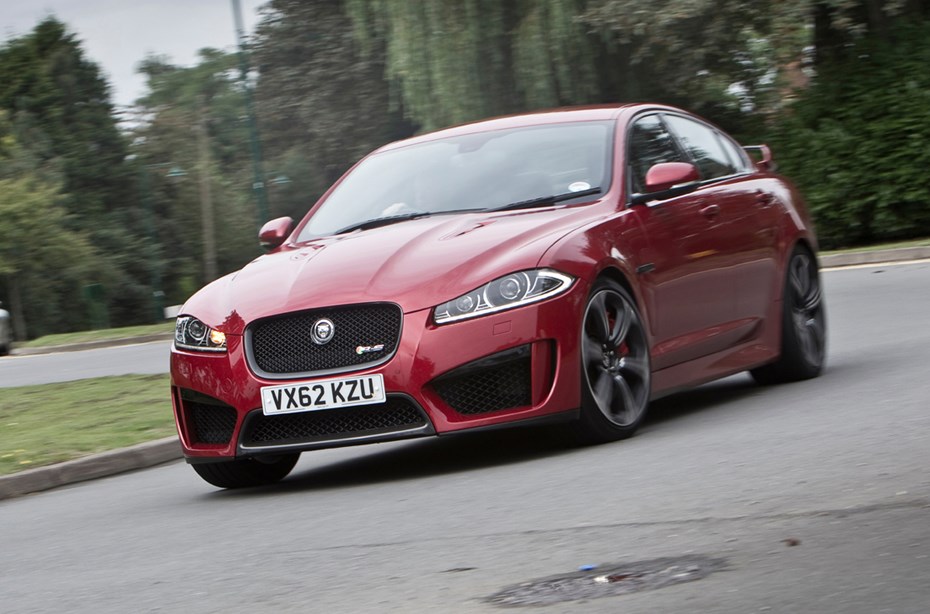
As you may expect when first encountering those huge wheels, the outlandish rear spoiler and the bonnet vents, Jaguar XFR-S performance is outstanding.
The engine is a 5.0-litre supercharged V8 which develops 542bhp and 680Nm of torque between 2,500 and 5,500rpm. While it provides fantastic speed, there’s a slight lag noticeable while you wait for the engine to wake up and slingshot you down the road.
It does sound fantastic though, and the speeds possible are mind-boggling. Officially it’ll cover 0-62mph in 4.6 seconds, but it’s the performance when moving that really astounds. It fires through the eight gears with relentless ferocity, and given it enough room it’ll hit an electronic speed-limiter at 186mph.
For the ultimate in performance you can sharpen up the throttle response and gear-change speed by selecting ‘Trac DSC mode’. Activate by holding the button with the chequered flag on it.
That gearbox is brilliant, slipping up and down gears smoothly and nearly unperceptively during normal driving and lightning-fast when required. It is controlled via the familiar rotary dial which rises out of the central console when you switch the car on.
You can also operate the ‘box manually if required using the paddles mounted behind the steering wheel.
This is a very interesting aspect of the XFR-S’s character. While the computer-controlled adaptive dampers and 30 percent stiffer springs mean it’s incredibly controllable and stable through corners, the obvious issue is all that power. It simply spins up the wheels if you push the throttle mid-corner, so you really have to be awake if you want to push on.
That said, the steering is wonderfully alive and the chassis very communicative. If you do get this car sliding it’s very compliant and easy to rein in. The traction and stability control systems prevent the car from becoming too dangerous a handful, but can be either toned down with the Trac DSC mode or turned off completely.
The latter option really is for race tracks only; it would be quite dangerous to do so on public roads due to the unruly nature of the rear end.
On the back axle there’s a clever differential which provides measured power to both wheels, ensuring the car’s predictable nature.


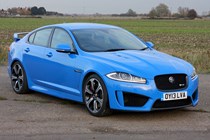
.jpg)
.jpg)
.jpg)
.jpg)
.jpg)
.jpg)
.jpg)
.jpg)
.jpg)
.jpg)
.jpg)
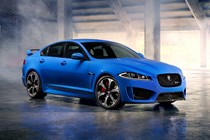
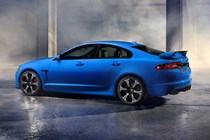
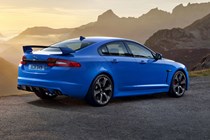

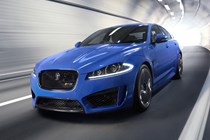
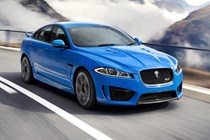

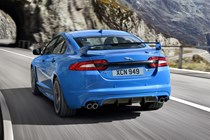
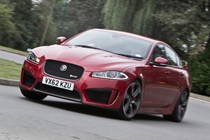
.jpg)
.jpg)
.jpg)
.jpg)
.jpg)
.jpg)
.jpg)
.jpg)
.jpg)
.jpg)
.jpg)
.jpg)
.jpg)
.jpg)
.jpg)
.jpg)
.jpg)
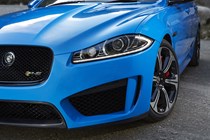


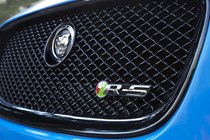
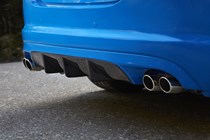
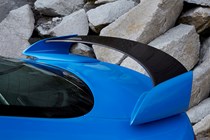
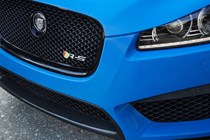
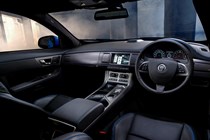
.jpg)
.jpg)
.jpg)
.jpg)
.jpg)
.jpg)
.jpg)
.jpg)
.jpg)
.jpg)
.jpg)
.jpg)
.jpg)
.jpg)
.jpg)
.jpg)
.jpg)
.jpg)
.jpg)
.jpg)
.jpg)
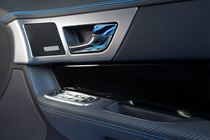
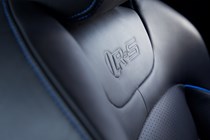

.jpg)
.jpg)
.jpg)
.jpg)
.jpg)
.jpg)

.jpg?quality=50)
.jpg?quality=50)
.jpg?quality=50)
.jpg?quality=50)
.jpg?quality=50)
.jpg?quality=50)
.jpg?quality=50)
.jpg?quality=50)
.jpg?quality=50)
.jpg?quality=50)
.jpg?quality=50)









.jpg?quality=50)
.jpg?quality=50)
.jpg?quality=50)
.jpg?quality=50)
.jpg?quality=50)
.jpg?quality=50)
.jpg?quality=50)
.jpg?quality=50)
.jpg?quality=50)
.jpg?quality=50)
.jpg?quality=50)
.jpg?quality=50)
.jpg?quality=50)
.jpg?quality=50)
.jpg?quality=50)
.jpg?quality=50)
.jpg?quality=50)








.jpg?quality=50)
.jpg?quality=50)
.jpg?quality=50)
.jpg?quality=50)
.jpg?quality=50)
.jpg?quality=50)
.jpg?quality=50)
.jpg?quality=50)
.jpg?quality=50)
.jpg?quality=50)
.jpg?quality=50)
.jpg?quality=50)
.jpg?quality=50)
.jpg?quality=50)
.jpg?quality=50)
.jpg?quality=50)
.jpg?quality=50)
.jpg?quality=50)
.jpg?quality=50)
.jpg?quality=50)
.jpg?quality=50)



.jpg?quality=50)
.jpg?quality=50)
.jpg?quality=50)
.jpg?quality=50)
.jpg?quality=50)
.jpg?quality=50)